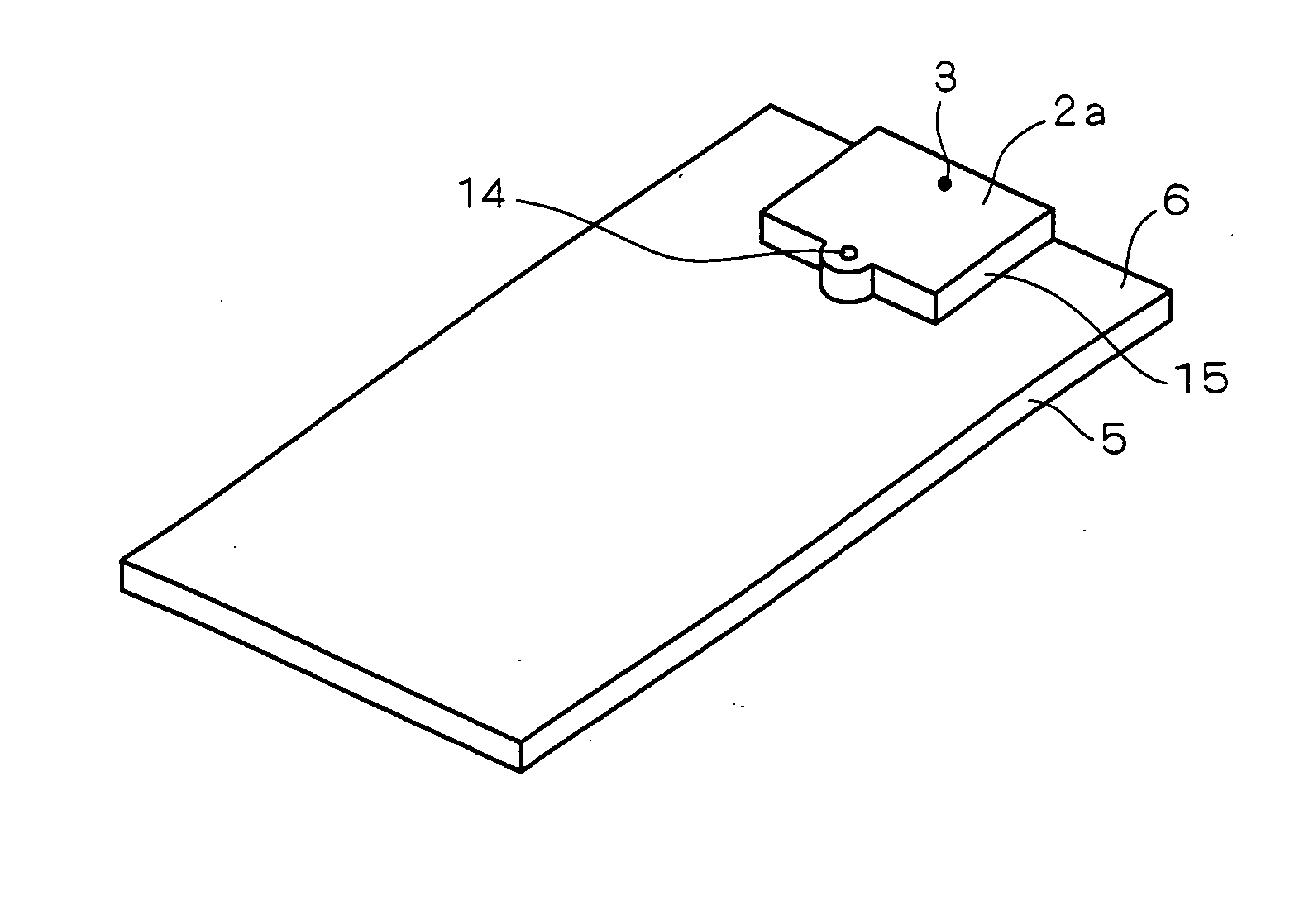Cell phone and built-in antenna thereof
a cell phone and antenna technology, applied in the field of cell phones, can solve the problems of low density, achieve the effects of suppressing the variation in the dimension of mass production, reducing the physical size of the antenna element, and reducing the weigh
- Summary
- Abstract
- Description
- Claims
- Application Information
AI Technical Summary
Benefits of technology
Problems solved by technology
Method used
Image
Examples
first embodiment
1. FIRST EMBODIMENT
[0042] In a built-in antenna of a cell phone, generally, the inventor examined conditions of a characteristic required for a material of a dielectric between an antenna element and a ground. As a result, the following items (1) to (6) can be given. [0043] (1) A relative dielectric constant is equal to or smaller than 3, [0044] (2) a dielectric dissipation factor is low, that is, 0.0002 or less, [0045] (3) plating can be carried out by an MID (Molded Interconnection Device) or a printing method, [0046] (4) an impact strength is at least equal to or greater than that (30J) of ABS (Acrylonitrile-butadiene-styrene) which is generally used in a cell phone, [0047] (5) a heat resistance to solder reflow is held, and [0048] (6) a density is low.
[0049] The inventor examined a material which can be used as an antenna element (the designation 2a in FIGS. 1 and 2) of a built-in antenna. As a result, it was found that materials listed in the following Table 1 can be given.
T...
second embodiment
2. SECOND EMBODIMENT
[0065] While the COP (Cyclo-olefin polymer) 15 to be a block-shaped dielectric in the plating grade which is subjected to the resin plating by the MID (Molded Interconnection Device) is applied as the antenna element 2a in the first embodiment, the same effects as those in the first embodiment can be obtained even if the block-shaped COP (Cyclo-olefin polymer) 15 subjected to the resin plating by a printing method is applied in place of such a structure. Also in this case, it is preferable that the antenna element 2a should be fixed onto the ground 6 of the circuit board 5 as shown in FIGS. 1 and 2.
third embodiment
3. THIRD EMBODIMENT
[0066] While the antenna element 2a is formed on the COP 15 in the plating grade and is fixed to the ground 6 provided on the circuit board 5 in each of the embodiments, for example, it is also possible to employ such a structure that a shield box for shielding a noise in which the ground 6 is to be provided is formed by the COP (Cyclo-olefin polymer) 15 in the plating grade and the antenna element 2a and the shield box (ground 6) are plated by an MID (Molded Interconnection Device), a printing method or the like in the case in which the circuit board 5 in which the ground 6 is not formed is covered with the shield box from above in FIGS. 1 and 2 and a metal for shielding of the shielding box also serves as the ground 6. Thus, it is not necessary to combine the shield box and the antenna element 2a as separate members. Therefore, precision in an assembly can be prevented from being varied and it is sufficient that only precision in molding is considered. According...
PUM
 Login to View More
Login to View More Abstract
Description
Claims
Application Information
 Login to View More
Login to View More - R&D
- Intellectual Property
- Life Sciences
- Materials
- Tech Scout
- Unparalleled Data Quality
- Higher Quality Content
- 60% Fewer Hallucinations
Browse by: Latest US Patents, China's latest patents, Technical Efficacy Thesaurus, Application Domain, Technology Topic, Popular Technical Reports.
© 2025 PatSnap. All rights reserved.Legal|Privacy policy|Modern Slavery Act Transparency Statement|Sitemap|About US| Contact US: help@patsnap.com



